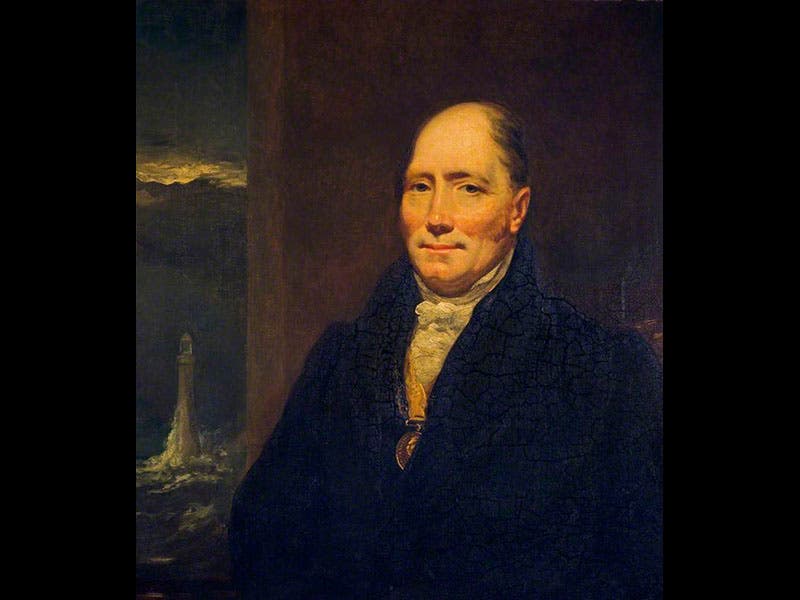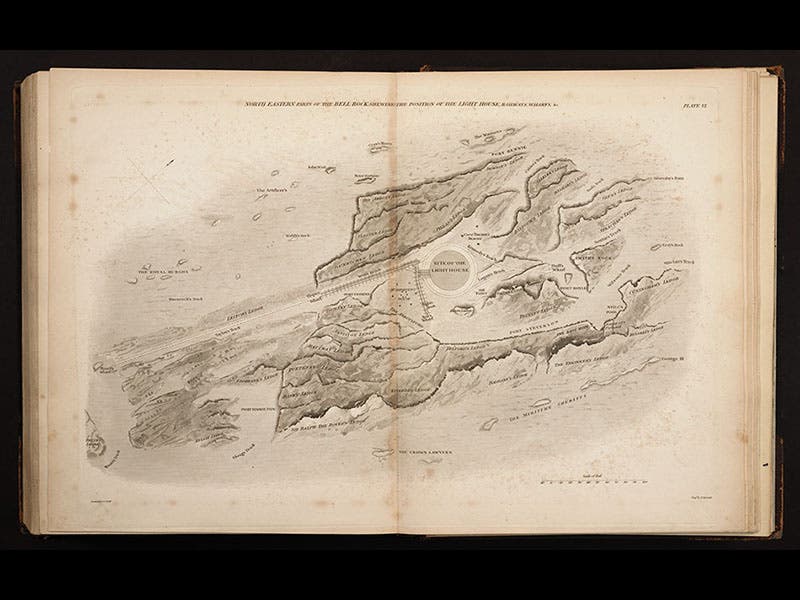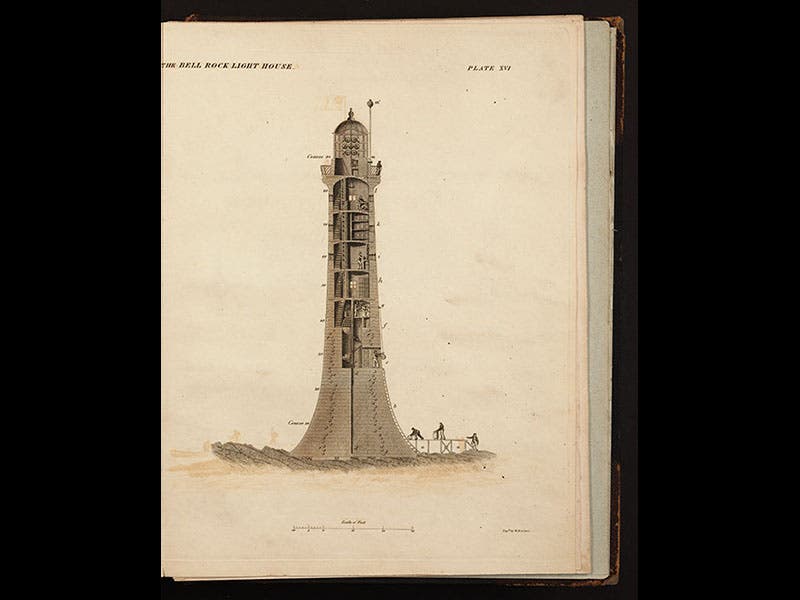Scientist of the Day - Robert Stevenson






Robert Stevenson, a Scottish civil engineer, was born June 8, 1772. Stevenson (not to be confused with Robert Stephenson, the English engineer who designed the Rocket and the Britannia Bridge) built many lighthouses around Scotland for the Northern Lighthouse Board, but he is best known for one of his first, the Bell Rock Lighthouse, which sits on a shelf of stone some 11 miles off the stormy eastern coast of Scotland, near the Firth of Tay. A British man o' war, HMS York, had struck the rock in 1804 and gone down with the loss of all hands, so the canal builder John Rennie was hired as chief engineer for the Bell Rock project, and he wisely appointed Stevenson as his resident engineer.
There were a number of obstacles to building a lighthouse on Bell Rock, the most formidable of which was the fact that the rock is above water for only a few hours a day, so the men had to work from a heaving ship, and only when the tide was out. Stevenson had them build a Beacon House on the rock, which projected above the high tide level, so that eventually the workmen had a (semi-) permanent place to stay. The model for the Bell Rock Lighthouse was the Eddystone Light, built of stones that were dovetailed into the base rock and into each other. Only a few courses were laid the first summer of 1807 (we see the first complete course above, fourth image), but the building accelerated in succeeding years, especially when a trackway was added to convey dressed stones from the dock to the lighthouse (see aerial view of the site above, third image). The last of the 90 stone courses was put into place late in 1810. Course 90 was about 100 feet above the base rock, and the lantern room projected up another 15 feet (fifth imge). The lamps were first lit on Feb. 1, 1811.
There has always been some controversy over the respective roles of Rennie and Stevenson in constructing the Bell Rock Lighthouse. There is no doubt that Stevenson built it, but there is considerable uncertainty as to who did the actual design. The debate continues to this day, since both men produced quite a lineage of architects and engineers (and one great writer, Robert Louis Stevenson). Whoever designed it, the Bell Rock Lighthouse was a great success; it has warned away ships for over 200 years now and has long outlasted the Eddystone Light on which it was modelled. Many artists have painted Bell Rock, the most notable being J.M.W. Turner, whose artwork is in the National Galleries of Scotland (first image), along with the portrait of Stevenson by John Syme (second image).
In 1824, 13 years after the fact, Stevenson published An Account of the Bell Rock Lighthouse, from which the images above were taken. The most dramatic engraving in the book shows the lighthouse under construction, with the Beacon House still in place (sixth image). Our copy is missing this plate, and the image we show is from another copy. We often use this book to make the point that a rare book collection should never, ever intentionally acquire a copy of a book that is incomplete. Since our copy came to us with the acquisition of the Engineering Societies Library in 1995, we had no choice in the matter, but the reality is that we will never be able now to acquire a complete copy. So do not be satisfied with an incomplete copy of any book, even if it wears a bargain price; it is always worth waiting for a book that is 100% complete. And in very good or better condition, we might add.
Dr. William B. Ashworth, Jr., Consultant for the History of Science, Linda Hall Library and Associate Professor, Department of History, University of Missouri-Kansas City. Comments or corrections are welcome; please direct to ashworthw@umkc.edu.


![“Aurora Borealis,” hand-colored wood engraving by Josiah Wood Whymper, [Natural Phenomena], plate 2, 1846 (Linda Hall Library)](https://assets-us-01.kc-usercontent.com:443/9dd25524-761a-000d-d79f-86a5086d4774/0245ffcb-b70c-477c-8792-0a73ebd54eb2/Whymper%2011.jpg?w=210&h=210&auto=format&fit=crop)



